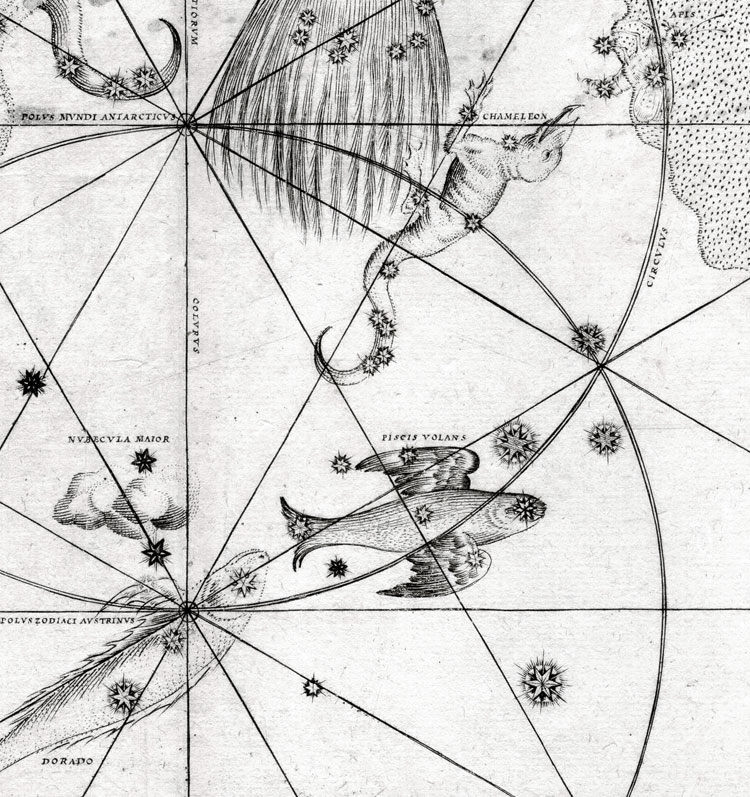
First edition was published in 1673 and this second edition in 1693 after Pardies' death in 1673. Pardies' engraver accomplished this task with great success.The plate(which) shows Hercules, Ophiuchus] Scorpius, Sagittarius, Aquila, and Lyra.is one of the most stunning compositions in the history of celestial cartography." Pardies took his constellation figures primarily from Bayer's Uranometria, but since each chart covers a large section of the sky, these figures had to be carefully integrated, which was not an easy task. From the Linda Hall Library exhibition catalog: "Pardies' star atlas is stylistically one of the most attractive ever published. These charts served as models for the star charts of William Dawes published by the SDUK in 1844 (see our 4063.000). The paths of several important comets are shown. The projection is gnomonic so the six charts make up a cube of the universe. Each sheet has engraved text panels in Latin and French. This copy is the six sheets of star charts only without binding, pages numbered 84-89, so probably removed from an atlas. First edition was published in 1674 and this second edition in 1693 after Pardies' death in 1673. Bayer, Johann, Explicatio.UranometriasĮxternal links Wikimedia Commons has media related to Uranometria.Second edition.

Inscriptions in the pedestals read, ' Atlanti uetustiss astronom magistro' ('Atlas the earliest teacher of astronomy') and ' Herculi uetustiss astronom discipulo' ('Hercules the earliest student of astronomy'). On pedestals to either side stand figures of Atlas and Hercules. It features an architectural motif with the full title in the center. The engraved title page of Uranometria is signed in the shadows of the central scroll at the bottom with the monogram AMF, for 'Alexander Mair fecit', and the date MDCIII.


 0 kommentar(er)
0 kommentar(er)
